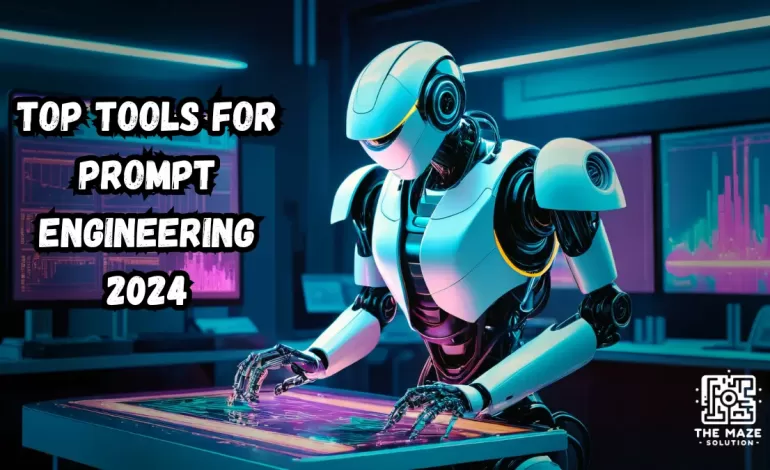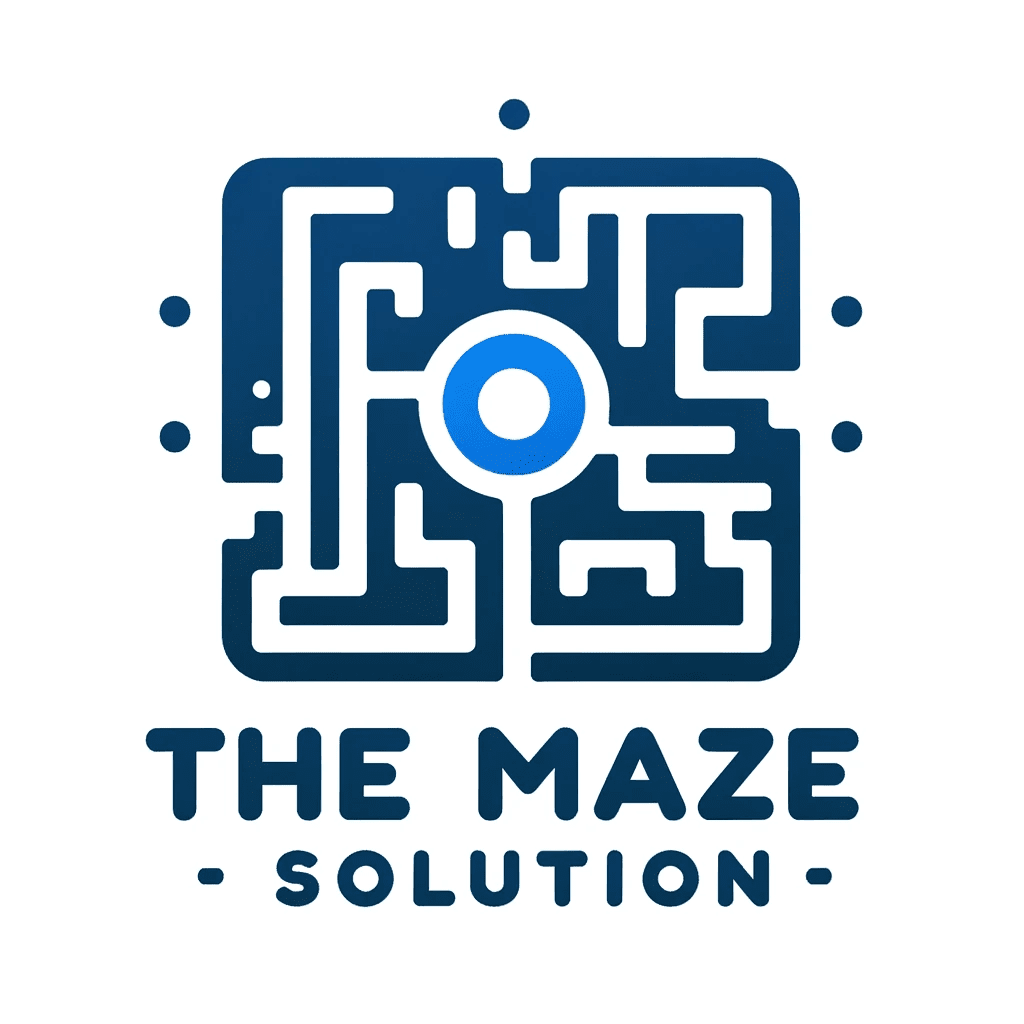Top Tools for Prompt Engineering 2024: Unlock Amazing Creativity!

In 2024, the art and science of prompt engineering tools are more important than ever. With AI models like LLMs and GPT leading innovation, mastering the strategic formulation of inputs has become a central skill. Prompt creation is not just about throwing in random ideas; it’s about carefully drafting questions and inputs that lead to desired outputs. Whether you’re guiding generative AI platforms or experimenting with Pre-trained Transformer systems, the nuanced field requires both creativity and technical acumen. It’s a combination of art and logic, where practitioners must think critically to produce accurate and contextually appropriate responses.
When working with large language models (LLMs), it’s crucial to have a thorough understanding of how to manipulate prompts effectively. You need a firm grasp of the underlying ML model, its algorithmic architecture, and the data set it draws from. Creating the right prompt may sound simple, but it’s often complex and requires precision. The ability to create a specific response from a model lies in your ability to identify key constraints and draft an optimal input.
Role of Prompt Engineering in Today’s World

The Rising Importance of Prompt Engineering
In today’s world, prompt engineering holds a pivotal role in shaping the future of AI and its entire ecosystem. As AI technologies continue to transform key sectors like healthcare, finance, education, and the creative arts, the demand for proficient prompt engineers has skyrocketed. These professionals serve as the critical link between advanced algorithms and human intentions, helping to unlock the full potential of AI systems. From developing smarter solutions to addressing societal needs, prompt engineering is making a significant impact on how technology influences our society.
Bridging the Gap Between Humans and AI
One of the most crucial roles in prompt engineering is acting as a linguistic bridge between humans and machines. Prompt engineers function as translators, transforming human intentions into clear, actionable instructions that AI applications can understand and execute. This process ensures that AI systems can effectively comprehend and deliver on the user’s needs, enhancing the overall user experience. By refining how AI tools interpret human input, prompt engineers are playing an essential part in expanding the accessibility and usefulness of AI across various industries.
Improving AI Efficiency and Reducing Costs
Beyond communication, prompt engineering is also key to optimizing AI performance. Engineers are tasked with crafting well-designed prompts that not only generate more precise responses but also reduce computational costs. This helps to improve the overall efficiency of AI operations, reducing the need for repeated queries and saving valuable computing resources. In fast-paced industries, having optimized AI tools can lead to significant time and cost savings, making AI more effective and accessible.
Innovation at the Intersection of Creativity and Technology
Finally, prompt engineering is a space of innovation and creativity. Engineers in this field experiment with various linguistic structures and strategies to solve complex problems, generate novel content, and even create art. This interdisciplinary field combines linguistic skills, psychological insights, and deep technical knowledge, showcasing how creativity and technology can converge to produce groundbreaking results. Whether it’s optimizing algorithms or creating entirely new forms of content, prompt engineers are truly at the frontier of what’s possible with AI.
Top Prompt Engineering Tools of 2024
These quick engineering tools have multiple uses, ranging from models and marketplaces to development frameworks and platforms for optimization.
1. PromptBase
One of the standout platforms for prompt engineering in 2024 is PromptBase, a specialized marketplace for buying and selling high-quality AI prompts. It’s designed for both professionals and enthusiasts who want to explore the potential of language models without dealing with the complexities of model training or prompt crafting from scratch. With its user-friendly interface and a vast collection of prompts across different domains, PromptBase has quickly become an essential resource for anyone looking to leverage AI for content creation, coding, or design.
One of the key advantages of PromptBase is its diverse marketplace, offering prompts for various categories and industries. The platform ensures quality and relevance by featuring user ratings and reviews for each prompt. Plus, the integration with popular AI models makes it easier for users to get started right away. For those looking for something specific, there’s even a custom request option that allows for personalized prompt development.
Another major benefit is the secure transaction and download system, which makes purchases safe and easy. Users can access a wide variety of pre-tested prompts, which saves time in development and testing. This facilitates rapid prototyping and the deployment of AI solutions. Even non-experts can take advantage of advanced AI capabilities, making PromptBase a great tool for expanding creativity and productivity.
However, there are some challenges to consider. The platform is dependent on the quality of submissions from third parties, which means not all prompts may meet your specific needs, especially if you’re looking for highly specialized prompts for niche applications. Additionally, accessing premium prompts may come with a cost barrier, which could be a consideration for some users.
2. ChatGPT
ChatGPT: Leading the Way in Prompt Engineering
In 2024, ChatGPT, developed by OpenAI, has emerged as one of the most versatile prompt engineering tools. Known for its conversational capabilities, it spans a variety of applications from tutoring and content creation to technical support. This tool leverages advanced language understanding and generation, making it a key player in helping users create effective prompts. The platform embodies the core principles of effective and adaptive dialogue through its responsive dialogue model, ensuring accurate and contextually relevant responses across various uses.
One of the standout features of ChatGPT is its state-of-the-art natural language processing capabilities. The tool is designed to engage in continuous learning from its interactions, which helps to consistently improve responses. Additionally, it offers a wide range of customization options, making it ideal for specific applications. The tool is also widely appreciated for its API support, allowing for seamless integration with other services and platforms, further enhancing its usability.
Users love ChatGPT for its intuitive and user-friendly interface, which supports a broad spectrum of languages and dialects. Whether you are developing conversational AI or focusing on rapid application development, ChatGPT ensures high-quality, contextually relevant responses. It also prioritizes security and privacy protocols, making it a reliable choice for businesses of all sizes.
However, ChatGPT does come with its challenges. For highly specialized tasks, some fine-tuning may be necessary to get the best results. Additionally, the tool relies heavily on OpenAI’s API for updates and improvements, which can lead to added costs, especially when scaling up API usage.
3. AI Avatar Generator
AI Avatar Generator: Revolutionizing Avatar Creation
The AI Avatar Generator is a standout tool in 2024, known for its ability to create highly detailed and customizable avatars using AI. Whether you’re in the gaming industry, virtual reality spaces, or focused on social media, this tool excels at handling complex design requests. By leveraging prompt engineering, users can specify traits, styles, and themes to generate creative and inclusive avatars. With its seamless integration with AI, the tool can interpret design prompts and bring them to life across different platforms, supporting everything from realistic to cartoonish designs.
One of the key strengths of the AI Avatar Generator is its ability to streamline the avatar creation process through AI assistance. The tools for animating and implementing avatars make it easy to bring them into various platforms. Additionally, its community engagement features allow for sharing and discovering creative designs, making it an inclusive tool that encourages diversity. However, the specificity of the prompts can impact the accuracy of the final design, and the tool’s dependence on high-quality input data is crucial for achieving optimal results.
4.Expert Prompting
Expert Prompting: Optimizing AI Research and Development
Expert Prompting is an advanced tool tailored specifically for researchers, data scientists, and AI developers. It focuses on optimizing interactions with complex AI systems through its advanced features for crafting, testing, and refining prompts. This tool is designed to enhance the accuracy and efficiency of AI models, particularly in research and development settings. By providing robust prompt crafting and optimization tools, it supports a wide range of AI models and applications, allowing users to conduct integrated testing and analyze prompt performance effectively.
In addition to its technical capabilities, Expert Prompting also offers strong collaboration tools for teams and research groups, promoting knowledge sharing among experts. It comes with extensive documentation and community support, ensuring users can maximize its precision and effectiveness in AI interactions. Although the tool is highly beneficial for high-level research and development activities, its complexity might be overwhelming for beginners, as it requires access to advanced AI models and significant computing resources to fully utilize its features.
5.GitHub
GitHub: A Collaborative Hub for Prompt Engineering
Although GitHub is widely known as a code hosting platform for version control and collaboration, it has become an invaluable resource for prompt engineers. The platform hosts numerous projects, libraries, and code snippets specifically for prompt engineering, offering a collaborative space where developers can share, improve, and discuss innovative prompt strategies and implementations. With its extensive repository of prompt engineering projects and tools, GitHub provides a rich environment for learning and contributing to the field.
The platform’s collaboration features, such as contributing to and reviewing projects, alongside integrated issue tracking and discussion forums, create strong community support. GitHub also offers robust version control for managing project iterations, making it easier for a wide community of developers and AI practitioners to access and improve their work. While GitHub is a rich source of code and knowledge sharing, navigating its resources can sometimes be challenging due to varying quality and relevance, requiring some level of technical expertise.
Job Outlook for Prompt Engineers in 2024
The job outlook for prompt engineers in 2024 is highly positive, driven by the growing use of artificial intelligence (AI) in various sectors. As more businesses and organizations continue integrating AI into their operations, the demand for skilled professionals who can design effective prompts to make AI systems interact smoothly with human needs is increasing. The expansion of AI and machine learning (ML) in industries like technology, healthcare, finance, education, and entertainment has created a need for professionals who can bridge the gap between human needs and AI capabilities.
Additionally, the evolution of large language models (LLMs) like GPT from OpenAI and BERT from Google has made natural language processing (NLP) more accessible and effective. As ethical AI becomes more important, prompt engineers will play a critical role in designing prompts that reduce bias and ensure fairness and transparency in AI systems. With the global AI market expected to reach $267 billion by 2027 and a projected CAGR of 37.3% from 2023 to 2030, prompt engineers will continue to be in high demand to meet the growing need for customized AI solutions and AI literacy across teams and industries.
Conclusion
The landscape of prompt engineering in 2024 is both vibrant and diverse, with numerous tools designed to unlock the full potential of AI across different domains. From creating immersive virtual experiences to enhancing workflow automation, the possibilities are endless. These top prompt engineering tools sit at the forefront of the AI revolution, allowing professionals to leverage AI in innovative and impactful ways. Whether it’s crafting personalized AI interactions or improving business processes, these tools are transforming industries.
For those who wish to delve deeper into AI and prompt engineering, programs like the Professional Certificate Program in Generative AI and Machine Learning provide a comprehensive curriculum. This course, offered through collaboration between Simplilearn and IIT Roorkee, equips learners with essential skills and knowledge. With hands-on experience and expert guidance, professionals can better navigate the complexities of modern AI technologies.
FAQs
1. What Are the Benefits of Using Prompt Engineering?
AI interactions are optimized through prompt engineering, which improves answer relevance and accuracy. It makes customized AI applications possible for a range of sectors, enhancing productivity and user experience. It also makes the application of AI ethically easier by directing models to produce impartial and equitable results.
2. How Difficult Is Prompt Engineering?
Prompt engineering gets harder or easier depending on the AI model’s complexity and the particular use case. To grasp developing AI technologies and approaches, one needs to possess a combination of technical mastery of AI, creativity, and ongoing learning.





